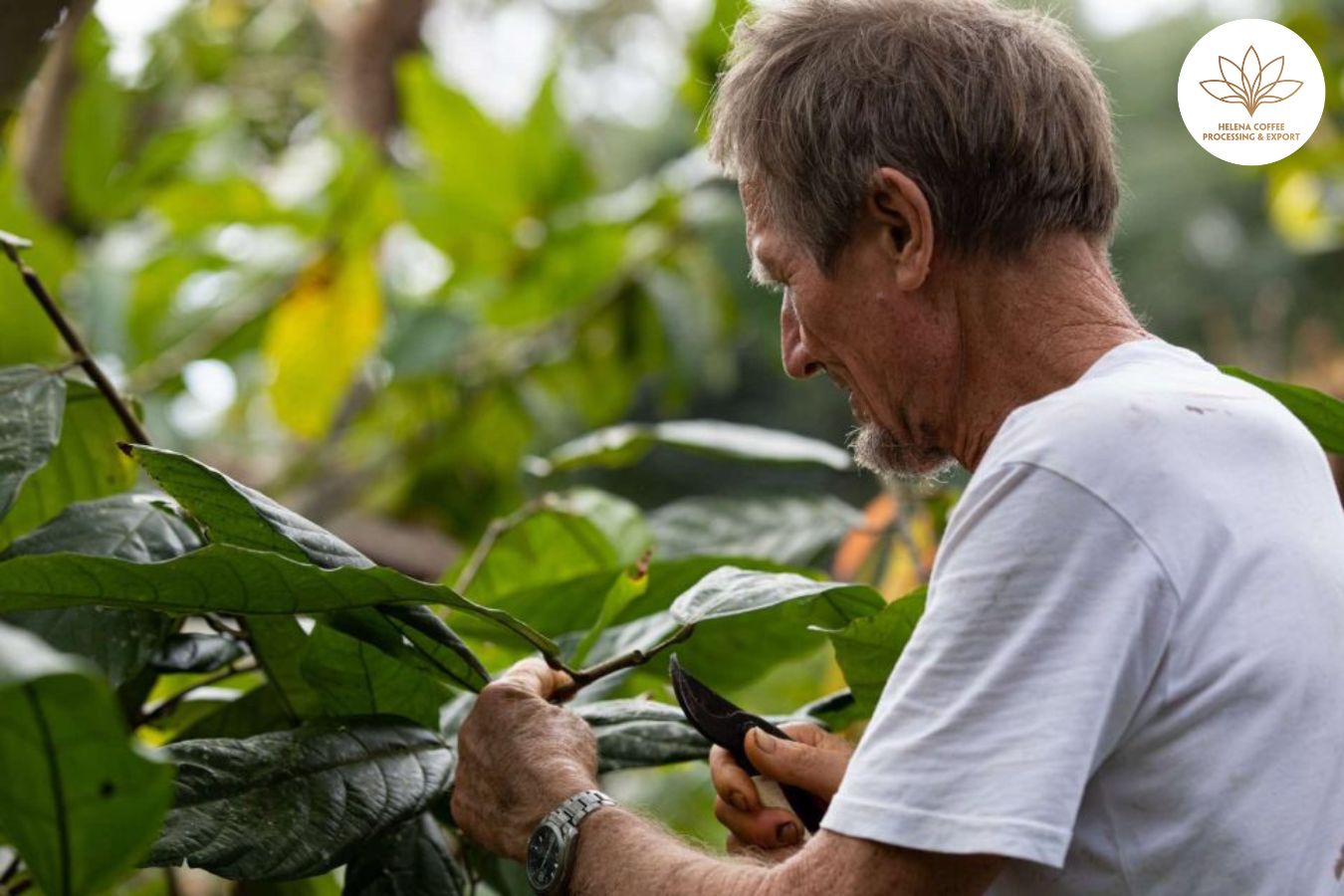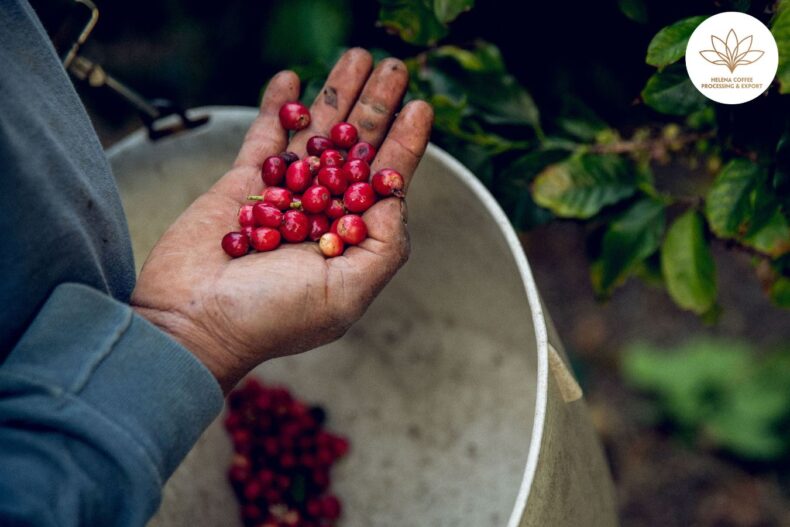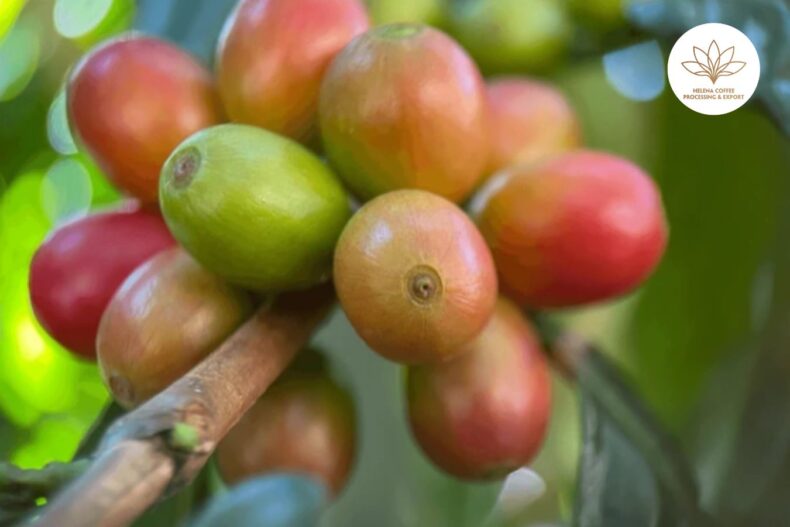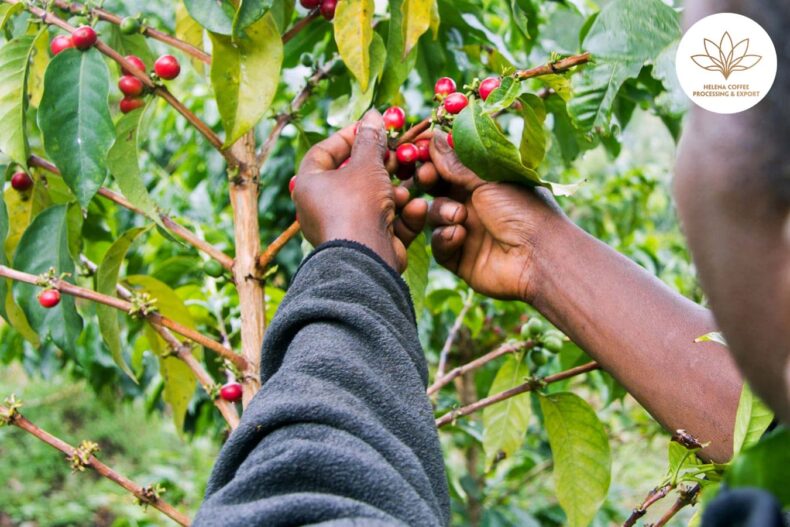
In recent years, sustainability has become a hotly debated topic in the coffee industry. Although this is an approach that has been extended to the entire supply chain, the interest focuses, above all, on sustainable coffee production.
When we talk specifically about environmental sustainability, one of the many areas that coffee production can focus on is agroecology. It is about applying agricultural techniques that take into account the ecological relationships between plants, animals, people and the environment. In this way, it is possible to minimize the impact of agriculture on wildlife and nature, and provide farmers with greater control over the yield and quality of their crops.
Syntropic agriculture is an agroecological model that is used in many industries, including coffee production. How does it work and how can coffee farmers apply this model on their farms?To find out, I spoke to syntropic farming pioneer Ernst Götsch and two farmers who use this model. Keep reading to learn about his experiences.
What is syntropic agriculture?
Syntropic agriculture (also known as successional agroforestry) is basically regenerative agriculture, although the model has several levels. It uses agricultural methods to integrate food production (including coffee) with the surrounding environment so that both benefit.
The syntropic agriculture model was developed by Swiss farmer and researcher Ernst Götsch, who has been working on farms in Bahia, Brazil, since the 1980s.
Götsch explains the holistic approach of syntropic agriculture: “it is the process of producing and harvesting what we need from plants and animals, maintaining a positive balance in the relationships between the different species,” he says.
While some farming models focus on increasing crop yields, Ernst notes that syntropic farming encourages more natural and sustainable methods of food production. For example, planting several different species of trees in the same area will encourage greater biodiversity and increase the number of birds, insects and microorganisms. Thus, a healthier and more diverse ecosystem is created.
“Syntropic agriculture is about understanding the dynamics between all organisms,” says Ernst. “Also, it is about reaching a level of integration that is beneficial for all organisms in the ecosystem.”
For syntropic agriculture to be successful, it is necessary to know that each plant, animal, bird, insect and microorganism plays a vital role in the ecosystem and, therefore, they must all work in harmony.
Agroecological farming practices are known to improve soil health and water cycles, regulate microenvironments, and improve area resilience to climate change . Over time, if balance is achieved between all organisms, crop production can greatly benefit.
Implementation of the model in coffee farms
Wilians Valério Jr. is a Brazilian coffee producer from Alto Caparaó, a city in the Caparaó coffee-producing region. He won the 2019 Brazilian Coffee of the Year award with a syntropically grown coffee and says that he applies this model in all areas of his farm.
“I try to accelerate nature’s processes,” he explains. “If you can understand natural processes, you can improve soil health and build energy in the ecosystem.”
After several years of disappointing results with more traditional farming methods, Wilians and his family were prompted to try syntropic farming. In their experience, these traditional methods resulted in low-quality coffee with irregular yields, which barely provided them with economic stability.
To improve quality and yield, Wilians’ father replanted all the coffee trees and interplanted them with other trees, such as peach, cape gooseberry and olive trees.
When Wilians inherited the farm in 2015, he chose to focus on the production of specialty coffees. “I decided on a farming model that could improve our income without eliminating any of the coffee trees my father had planted, so I researched syntropic agriculture,” he explains.
Two years later, Wilians took 12th place in the Brazilian Coffee of the Year awards. Since then, he has used syntropic farming throughout his farm, with promising results: the following year he placed sixth.
He says that he was inspired by another farmer who had been growing coffee sustainably in the mountains of Caparaó for more than 25 years.
Clayton Barrossa Monteiro grows organic specialty coffee on a farm near Ninho da Águia. He is well known for his agroecological and self-sustainable farm management practices, and received first prize from him in 2012.
“Producers began to believe that specialty coffee had to be organic,” he explains. “This then pushed others to start growing coffee in more sustainable ways.”
Change perceptions and practices
Wilians states that for syntropic coffee production to be successful, the impact on the entire ecosystem must be taken into account.
“We always consider the next step,” he says. “We have to consider what benefits the plants. We always cultivate, prune and harvest in balance with nature.”
According to Ernst, traditional agricultural techniques have their limitations when it comes to growing coffee. In his experience, these growing methods can unbalance resources such as water, nutrients and natural light; However, he explains that problems related to syntropic farming are often the result of a lack of knowledge on how to carry out these methods effectively.
“The problem is not the lack of water or soil fertility,” he maintains. “It is the lack of knowledge about syntropic processes. The farmer or the advisor does not know how to recommend the best techniques or practices.”
For new methods to be as effective as possible, coffee farmers who have the infrastructure and financial access to invest in syntropic agriculture should abandon traditional farm management practices. This change can be demanding and expensive, making it inaccessible for some coffee farmers.
“Farmers spend more money when they first implement sustainable agriculture models,” says Clayton. “If they can plan tree lines and nests (the holes in which trees are planted) efficiently, they will not have to continue investing in their trees.”
Clayton adds that once farmers have adopted syntropic growing techniques, future costs will mostly come from pruning coffee trees.
How can syntropic cultivation improve coffee quality?
Ernst explains that one of the many advantages of syntropic agriculture is that it allows yield per tree to be optimized in the long term. This is mainly because trees grow in harmony with nature, so they can reach their full potential when given enough time.
After applying syntropic farming techniques on his farm, Wilians claims to have noticed significant improvements in the coffee. “The resistance of the trees to pests and diseases, their growth and productivity, and the size of the grains have improved,” he says.
He adds that his coffee acquired a more complex flavor, with more depth and a long finish on the palate. Clayton says that when more sustainable methods of coffee production are used , such as syntropic growing techniques, a more consistent yield is achieved.
“When trees are exposed to more stress, variations in high or low productivity can occur,” he explains. “With syntropic agriculture, the development of trees occurs in a more balanced way and this is noticeable in coffee.” It is basically the result of continuous pruning, shading and light exposure. When these variables are more constant and controlled, coffee trees can respond better to any change in their environment.
The challenges of syntropic agriculture
Although this sustainable method of coffee production has numerous advantages, farmers face several challenges when adopting it. Wilians says it can be difficult for growers to acclimatize to the time it can take to improve quality and yield.
“The time it takes to learn, understand and change perceptions linked to more traditional agriculture is also a challenge,” he explains. “It takes time to understand what is good for the earth and the natural processes involved.”
“The probability of farmers making mistakes is greater,” he adds. “There is no doubt that they will make mistakes but they will learn through constant practice.”
Clayton agrees that syntropic growing methods may not be suitable for all coffee farmers. “A method that works on one farm may not work on another,” he emphasizes. “Farmers have to be very careful and have a lot of patience.”
“Many producers are used to carrying out the same conventional practices for years,” he says. “They know a lot but about a few plants.”
For producers using more conventional farming methods , transitioning to agroecological models means intercropping coffee with other trees and plants. This implies that each crop requires a different treatment, which can be costly in time and resources.
“Corn can be harvested in 90 days, while cassava and other root vegetables need six months,” says Clayton. “Farmers also have to prune tall trees more.”
“Nature is what dictates the rhythm. There is no routine because there is more diversity.”
Clayton adds that this diversification can create a balance that acts as a form of resistance to diseases and pests.
Is syntropic agriculture applicable to all coffee farms?
Wilians and Clayton believe the syntropic farming model can be applied to farms of all types and sizes; However, the key to success is ensuring that the model can be adapted to the specific farm environment.
“I am currently developing syntropic agriculture in Norway, the Mediterranean and other tropical areas, including in places prone to drought,” explains Ernst. “The principles are the same but the species and ecosystems involved are different.”
In the case of Wilians, it is a challenge to carry out efficient crop management in a mountainous area because his farm is located at about 1,300 m above sea level.
“It is not easy to achieve the best arrangement for the trees but it is the only way that opens up the possibilities of success in agriculture,” he says.
With syntropic growing methods, trees are usually planted in parallel lines. Farmers can choose to plant different species and coordinate pruning schedules based on the development of each tree .
“Coffee is our main crop but we cannot ignore other species,” says Wilians. “You have to think about the whole scenario because everything matters.”
Wilians gives some tips for deciding which plants will perform best when intercropped with coffee trees. “There is no right or wrong answer, you have to identify the resources you have,” she says. “Available sunlight, soil types, altitude, slope of the terrain… are some of the factors that influence the decision.”
Sustainable agriculture models can be beneficial for coffee producers, especially when they focus on two objectives: improving quality and positively influencing the local environment.
Syntropic farming is a promising alternative to conventional farming methods but it is important for farmers to be aware of the challenges it brings. Change requires a lot of patience and considerable investment.
Ultimately, through knowledge sharing and greater collaboration, farmers will be able to better understand the nuances of syntropic agriculture and know whether it is right for them or not.
FAQs:
- How Specialty Coffee Production Unfolds in Liberia
- How Long Does It Take To Transition To Organic Coffee Production?
- How To Use Coffee Flowers In Specialty Coffee Production


